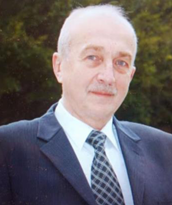Effect of defects on honeycomb structure in a ‘honeycomb – composite matrix’ system on acoustic emission in a changing temperature field
https://doi.org/10.18384/2310-7251-2022-2-17-27
Abstract
Aim. The purpose is an experimental study of a complex system that combines a honeycomb structure that is normal-conjugated with a compositional structure and has imperfections.
Methodology. The influence of the defectiveness of the honeycomb structure on acoustic emission in the ‘“honeycomb matrix – composite’ system, when a changing temperature field acts as an external disturbance, is considered. Acoustic emission methods are used. Instead of loading the sample with external forces, a temperature field is used. Temperature field gradients generate mechanical stresses in the sample, exciting acoustic fields in the sample. Acoustic signals and sample temperature are recorded.
Results. Time dependences of the amplitudes of acoustic signals are obtained by heating samples with and without defects. It is also found that the sample size affects the acoustic emission.
Research implications. The amplitude characteristics of acoustic emission signals make it possible to control complex systems at different temperatures and detect defects without using mechanical loading of products. The developed methods of acoustic emission in temperature fields are applicable to the analysis and control of complex engineering structures.
About the Authors
E. M. AseevRussian Federation
Evgenii M. Aseev – Postgraduate Student, Department of General Physics
ul. Very Voloshinoi 24, Mytishchi 141014, Moscow Region
E. V. Kalashnikov
Russian Federation
Evgenii V. Kalashnikov – Dr. Sci. (Phys.-Math.), Prof., Department of Computational Mathematics and Information Technology
ul. Very Voloshinoi 24, Mytishchi 141014, Moscow Region
References
1. Bekher S. A., Bobrov A. L. Osnovy nerazrushayushchego kontrolya metodom akusticheskoi emissii [Fundamentals of non-destructive testing by acoustic emission]. Novosibirsk, Siberian Transport University Publ., 2013. 145 p.
2. Buylo S. I. Fiziko-mekhanicheskie, statisticheskie i khimicheskie aspekty akustiko-emissionnoi diagnostiki [Physico-mechanical, statistical and chemical aspects of acoustic emission diagnostics]. Taganrog, Southern Federal University Publ., 2017. 184 p.
3. Landau L. D., Lifshitz E. M. Theory of Elasticity, Vol. 7. Oxford, Butterworth-Heinemann, 1986. 195 p.
4. Aggelis D. G., Shiotani T., Momoki S., Hirama A. Acoustic Emission and Ultrasound for Damage Characterization of Concrete Elements. In: ACI Materials Journal, 2009, vol. 106, no. 6, pp. 509–514. DOI: 10.14359/51663333.
5. Bu F., Xue L., Zhai M., Huang X., Dong J., Liang N., Xu C. Evaluation of the characterization of acoustic emission of brittle rocks from the experiment to numerical simulation. In: Scientific Reports, 2022, vol. 12, pp. 498–514. DOI: 10.1038/s41598-021-03910-8.
6. Chen Y., Ding X., Fang D., Sun J., Salje E. K. H. Acoustic Emission from Porous Collapse and Moving Dislocations in Granular Mg-Ho Alloys under Compression and Tension. In: Scientific Reports, 2019, vol. 9, pp. 1–12: DOI: 10.1038/s41598-018-37604-5.
7. Chen Z., Qu J. Dislocation-induced acoustic nonlinearity parameter in crystalline solids. In: Journal of Applied Physics, 2013, vol. 114, iss. 16, pp. 164906–164921. DOI: 10.1063/1.4826523.
8. Cybulska J., Pieczywek P. M., Zdunek A. The effect of Ca2+ and cellular structure on apple firmness and acoustic emission. In: European Food Research and Technology, 2012, vol. 235, pp. 119–128. DOI: 10.1007/s00217-012-1743-6.
9. Dong L., Tao Q., Hu Q., Deng S., Chen Y., Luo Q., Zhang X. Acoustic emission source location method and experimental verification for structures containing unknown empty areas. In: International Journal of Mining Science and Technology, 2022, vol. 32, iss. 3, pp. 487–497. DOI: 10.1016/j.ijmst.2022.01.002.
10. Huang Y., Li K. M. The Effect of Honeycomb Cavity: Acoustic Performance of a Doubleleaf Micro Perforated Panel. In: The Summer Undergraduate Research Fellowship (SURF) Symposium (4 August, 2016, Purdue University, West Lafayette, Indiana, USA). Available at: https://docs.lib.purdue.edu/surf/2016/presentations/56/ (accessed: 01.02.2022).
11. Kim C. S., Kwun S. I., Lissenden C. J. Influence of Precipitates and Dislocations on the Acoustic Nonlinearity in Metallic Materials. In: Journal of the Korean Physical Society, 2009, vol. 55, no. 2, pp. 528–532.
12. Leone F. A. Jr., Ozevin D., Godinez V., Mosinyi B., Bakuckas J. G. Jr., Awerbuche J., Lau A., Tan T.-M. Acoustic emission analysis of full-scale honeycomb sandwich composite curved fuselage panels. In: 15th International Symposium on Smart Structures and Materials & Nondestructive Evaluation and Health Monitoring. Vol. 6934, Non-destructive Characterization for Composite Materials, Aerospace Engineering, Civil Infrastructure, and Homeland Security. (San Diego, CA, March, 2008). Available at: https://clck.ru/rf7fX (accessed: 01.02.2022). DOI: 10.1117/12.776146.
13. Liu Y., Pang B. J., Jia B., Chang Z. Z. Modal acoustic emission based location method in honeycomb core sandwich structure. In: 6th European Conference on Space Debris (Darmstadt, Germany, 22–25 April 2013). Available at: https://conference.sdo.esoc.esa.int/proceedings/sdc6/paper/18/SDC6-paper18.pdf (accessed: 01.02.2022).
14. Yoon D.-J., Lee S., Kim C. Y, Seo D.-C. Acoustic emission diagnosis system and wireless monitoring for damage assessment of concrete structures. In: Proceedings of NDT for Safety (November 07–09, 2007, Prague, Czech Republic), pp. 301–308.
15. Zejli A., Khamlichi A., Attajkani S., Ameziane K. Acoustic Emission Analysis method for solving problems of damage mechanisms in concrete structures. In: 24ème Congrès Français de Mécanique (Brest, 26 au 30 Août 2019). Available at: https://cfm2019.sciences-conf.org/245076/document (accessed: 01.02.2022).
































